STUDENTS PROJECTS
2010
23 July, 2010
School of architecture Patra
The main concept was to create an environment full of life, motion, artistic work in the making and evoke complicated relationships among its users.
student: Antonella Theodorakatou
teacher: George Panetsos
school: University of Patras
presentation date: March 24th 2010
School of architecture patra/ greece/ 20.500m2/ 550 students
In my thesis project I designed the building for the School of Architecture in Patras, Greece. Knowing that personal experience plays a significant part in forming architect's future design choices, I created a building that does not impose a specific point of view but in the contrary, broadens spatial horizons by rejecting rules and restrictions.
Buildings where architectural education takes place pose a great example of built environment for the architects to-be. It is in this environment that students come across notions of construction, circulation, materials, volumes, light and shadow, and link them with used practices in their surroundings. In general I tried to contribute to the architect's ‘'awareness'' and offer a source of inspiration during the first steps of his becoming a professional. The way architectural education is practiced affects and determines the architect's professional behavior.
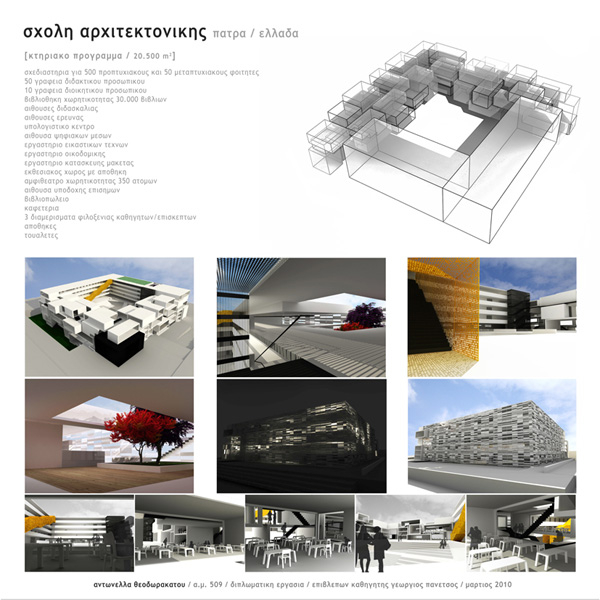
The site's location at the entrance of the campus, next to the administration building automatically makes this building an important university landmark. Housing a school of architecture the building conveys innovative notions of circulation, public space and habitation and at the same time proposes the way in which architectural education should be conducted today. The main concept was to create an environment full of life, motion, artistic work in the making and evoke complicated relationships among its users. The goal is to see how young students will respond to this new data and how this new data will help them shape their character as architects.
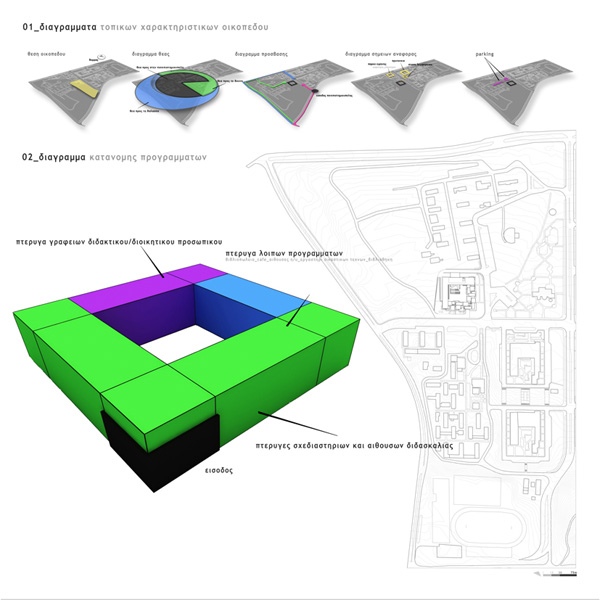
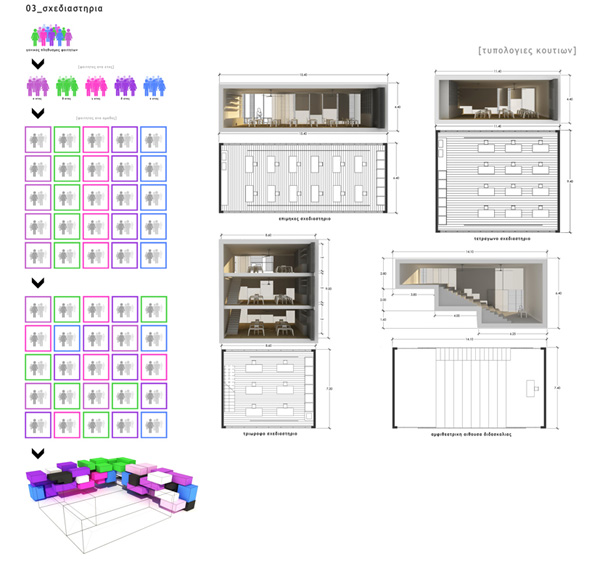
The volume of the building resembles a cube missing its internal core. In fact this core is a central atrium, a public space where activities aimed to the public will take place. Around this core I have arranged the various programs in such a way that students, professors and visitors are able to see and ''grasp'' the building as a whole from each and every one of its levels and thus take part in conversations, workshops, presentations. The bus station -the main means of transport for students- and the site's geographical characteristics determined the building's entrance and orientation. The cube consists of two parts symmetrical to the diagonal that bisects the entrance; each part houses different programs and offers different spatial experiences. On the one half, facing the campus, where the design studios are located, the building adopts a penetrable, see-through system inviting the public and sharing ''architectural thought''. In contrast to that part, the other half where professors' offices, an auditorium and additional teaching facilities are situated, a facade system is used to provide a unified view.
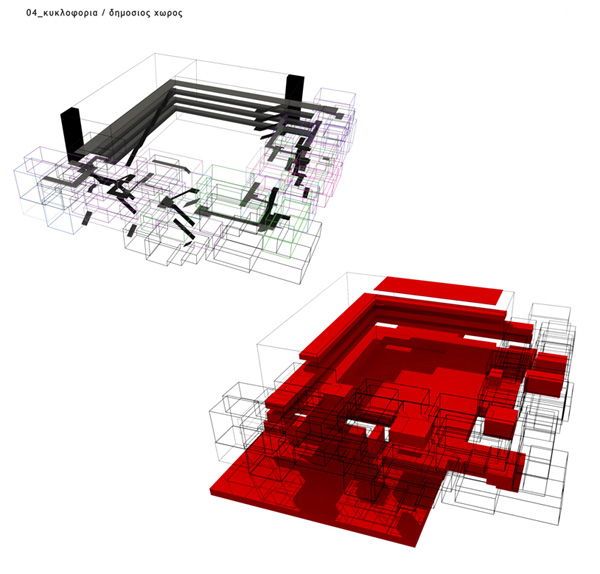
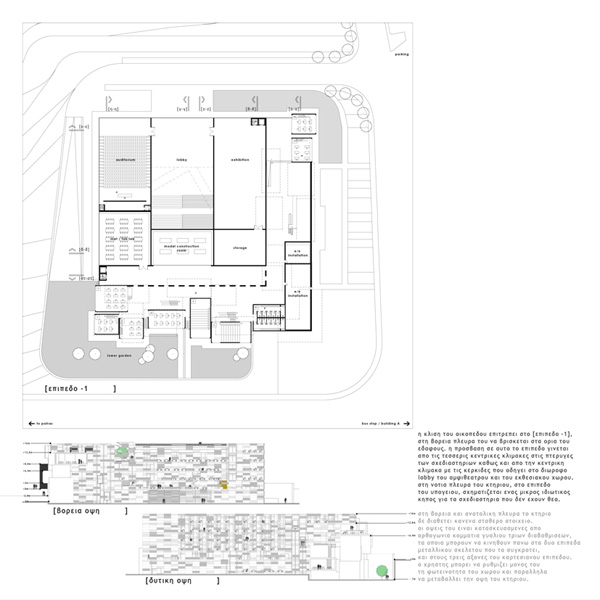
The design studio is the most important program in a school of architecture. Their shape, location and characteristics control the relationships among the students and organize the way education is conducted. The idea of the form for the studios derived from the way the students are distributed into groups during the course of architectural composition. Each academic year is divided into groups of 12-15 individuals that have the same teacher and treat the same project. Accordingly I chose to place this particular 12-15 people-unit in an independent box in order to ensure communication and cooperation between students in a space where external parameters are controlled. The academic year, as a unity, still exists, as there are classrooms/amphitheatric boxes that can host up to 100 people that additional courses take place. In addition to that, students of the same year tend to be housed in adjacent boxes which communicate with ramps and stairs.
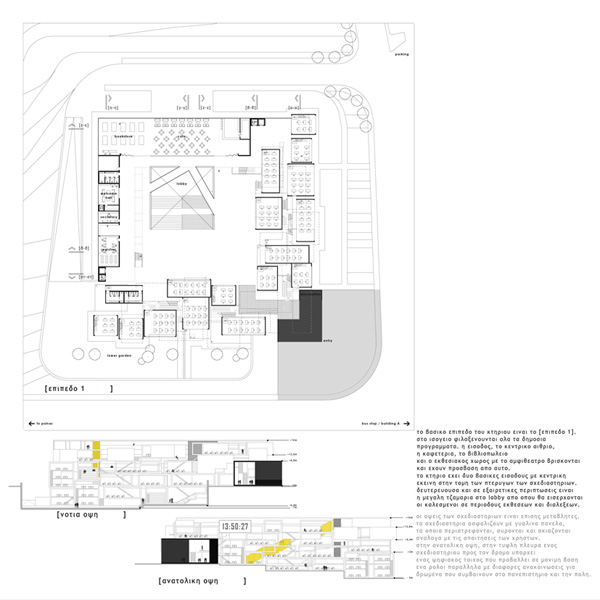
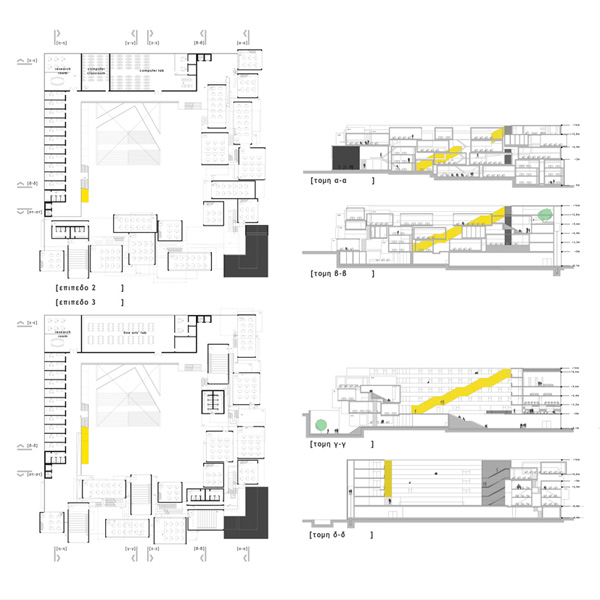
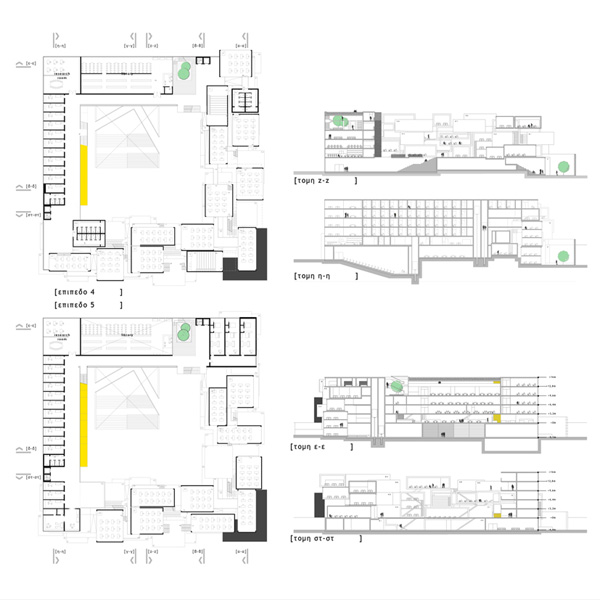
Circulation in the building is separated in two parts. In the design studios' wings circulation is organized around four vertical scales that in a tree-like manner spread around the wing and serve all ''boxes''. Entrance in each box-studio is free and sometimes essential to go from one box to another, in this way "forcing" students to keep contact and observe each other's work. In the other half two stairs and four elevators serve the needs for vertical movement. In the parts where the two wings meet ramps and stairs connect the two different systems and thus circulation is not interrupted.
To conclude, public space in such a building is of great importance. The central atrium, the main public space of the building, offers plenty of space for open air festivals, exhibitions and other events. The central stairs with the bleachers that lead to the lobby of the auditorium and the gallery, the bi-level entrance, corridors and gardens are public spaces to be found everywhere in the building and are designed to aid circulation and to provide "decompression" areas, aiding both work and rest. Furthermore, a very interesting spatial organization, the negative space created from the design-studio boxes represents a multi-layered, multi-leveled public space, offering numerous different areas between, on top, behind or under studios. Areas that while all being public offer different spatial experiences.
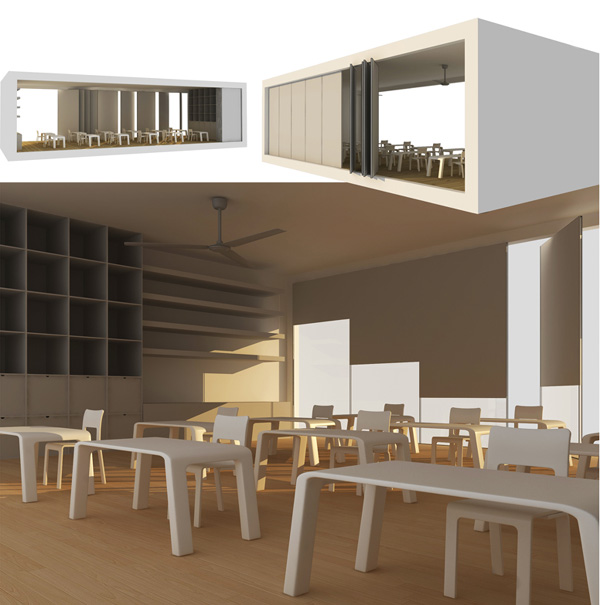

Related articles:
- Music high-school in Plato’s Academy ( 23 June, 2009 )
- ARSAKEIO OF TIRANA GREEKALBANIAN SCHOOL ( 23 June, 2010 )
- ARSAKEIO OF PATRAS ( 15 October, 2009 )
- Education for production_ School of industrial design engineering on Iera Odos ( 08 April, 2011 )
- Μodel Εducational Unit in Kozani ( 31 January, 2011 )
- Student Residence in Lofos Sikelias Neighborhood ( 02 March, 2011 )
- Experimental educational complex in Tagarades, Thessaloniki ( 03 March, 2011 )
- Independence Spaces - Hazelwood School Glasgow ( 01 May, 2011 )
- Tellus Nursery School ( 29 December, 2013 )
- Pio Baroja Nursery, learning from playing ( 07 June, 2014 )
- School center in Ambelokipi (High School - Μidle School) ( 20 March, 2012 )
- Concrete production plant reformation ( 05 April, 2012 )
- Primary school ZV Zavelput ( 14 April, 2012 )
- International architectural competition. Innovative, bioclimatic, European school complexin Crete, Greece ( 03 February, 2013 )
- Nest and flight ( 18 April, 2013 )
- Dance and Music Art Center (DaMAC) in Klafthmonos Square ( 07 July, 2013 )
- Artistic high school near the House for the Elderly in Athens ( 20 September, 2013 )
- Diffuse school in the urban tissue of Patras ( 20 April, 2014 )
- Towards a social school ( 11 November, 2014 )
- Greek High-School, Laniteion ( 17 March, 2015 )
- An alternative music academy ( 25 March, 2015 )










